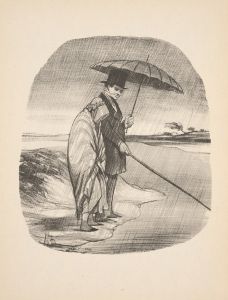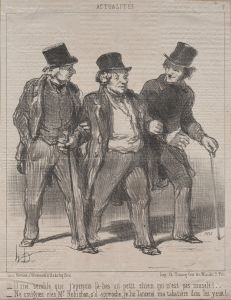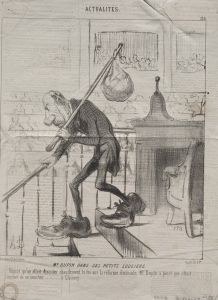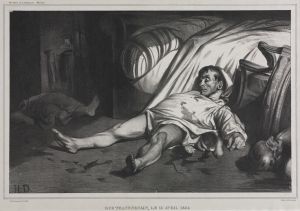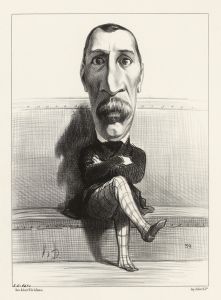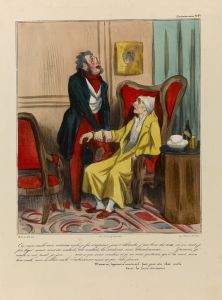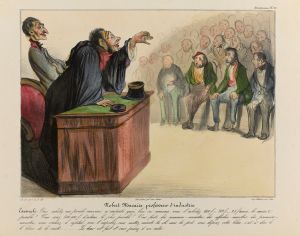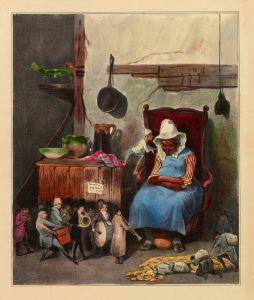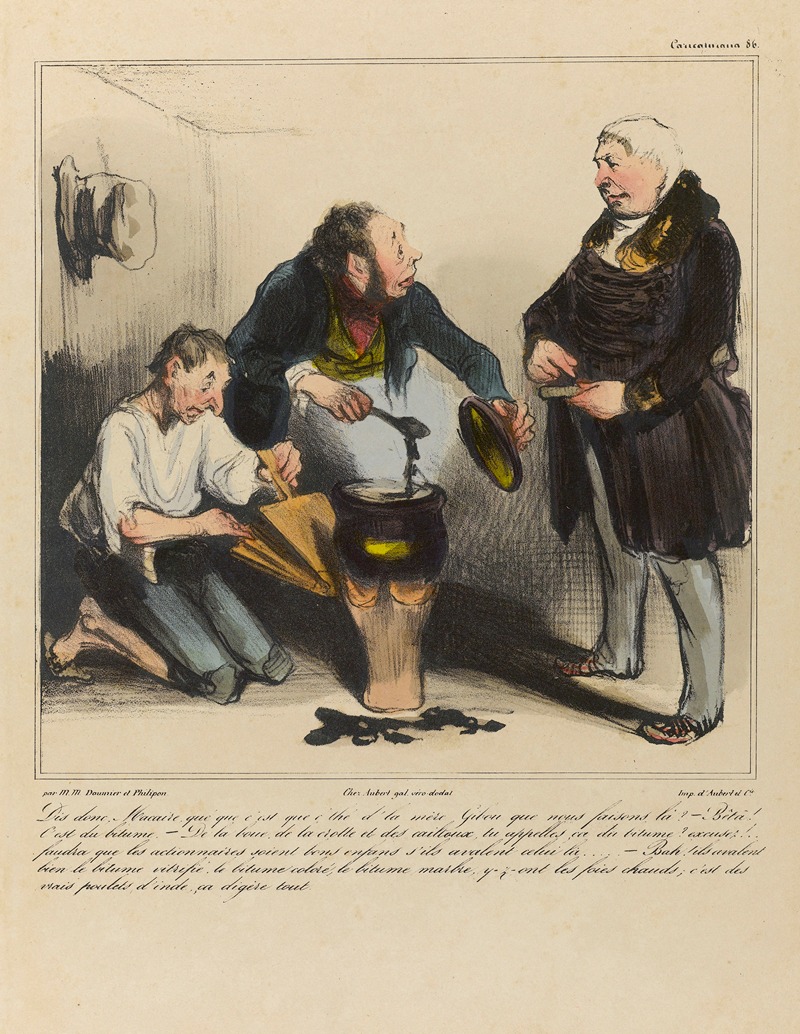
Dis donc Macaire, que que c’est que c’thé d’la mère Gibou que nous faisons là
A hand-painted replica of Honoré Daumier’s masterpiece Dis donc Macaire, que que c’est que c’thé d’la mère Gibou que nous faisons là, meticulously crafted by professional artists to capture the true essence of the original. Each piece is created with museum-quality canvas and rare mineral pigments, carefully painted by experienced artists with delicate brushstrokes and rich, layered colors to perfectly recreate the texture of the original artwork. Unlike machine-printed reproductions, this hand-painted version brings the painting to life, infused with the artist’s emotions and skill in every stroke. Whether for personal collection or home decoration, it instantly elevates the artistic atmosphere of any space.
Honoré Daumier was a prominent French printmaker, caricaturist, painter, and sculptor, known for his satirical works that often critiqued the social and political landscape of 19th-century France. One of his notable works is the painting titled "Dis donc Macaire, que que c’est que c’thé d’la mère Gibou que nous faisons là," which translates to "Say Macaire, what is this tea of Mother Gibou that we are making here?"
This painting is part of Daumier's extensive oeuvre that includes a variety of media, but he is particularly celebrated for his lithographs and caricatures. Daumier's work often depicted the lives of the lower and middle classes, as well as the corruption and incompetence of the ruling elite. His sharp wit and keen observation made his works powerful commentaries on contemporary society.
"Dis donc Macaire, que que c’est que c’thé d’la mère Gibou que nous faisons là" is a fine example of Daumier's ability to blend humor with social critique. The painting captures a moment of everyday life, rendered with Daumier's characteristic attention to detail and expressive style. The title itself suggests a humorous or colloquial dialogue, indicative of Daumier's interest in the vernacular speech and the daily interactions of ordinary people.
Daumier's technique in this painting, as in many of his works, showcases his skill in capturing the essence of his subjects with a few bold strokes. His use of light and shadow, as well as his ability to convey emotion and character through facial expressions and body language, are evident in this piece. The painting likely reflects Daumier's interest in the human condition and his empathy for the common people, themes that recur throughout his body of work.
The historical context of Daumier's career is crucial to understanding his art. He lived through a tumultuous period in French history, including the July Monarchy, the 1848 Revolution, and the establishment of the Second Empire. These events provided ample material for his satirical works, as he witnessed firsthand the political upheavals and social changes of his time. Daumier's art often served as a form of social commentary, critiquing the injustices and absurdities he observed.
While "Dis donc Macaire, que que c’est que c’thé d’la mère Gibou que nous faisons là" may not be as widely recognized as some of Daumier's other works, it remains an important piece within his oeuvre. It exemplifies his unique ability to combine humor with incisive social observation, making his work both entertaining and thought-provoking.
In summary, Honoré Daumier's "Dis donc Macaire, que que c’est que c’thé d’la mère Gibou que nous faisons là" is a testament to his talent as a painter and social commentator. Through his art, Daumier captured the spirit of his times, providing a window into the lives and struggles of the people of 19th-century France. His legacy as a master of satire and a keen observer of human nature continues to be celebrated today.





